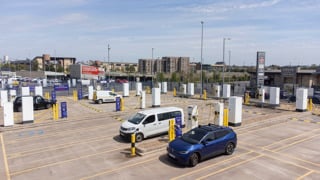Arval has developed a new tool to help company car drivers understand which powertrains are suitable for their needs.
Based on eight questions, The Driver Powertrain Compatibility tool shows a percentage suitability for each of five options – diesel, petrol, hybrid, plug-in hybrid and electric.
The questions asked cover driving cycles, average daily distances, work and business journeys over 150 miles, driving style, towing, vehicle recharging availability and even driving holidays.
Shaun Sadlier, head of consultancy at Arval, said: “As we move towards a much wider choice of drivetrain options, we need to develop methods of matching fuel type to driver need. The tool allows us to build up a picture of the driving needs, habits and style of each person and deliver a considered outcome.
“We see this as a really important way of helping to enable EV and hybrid adoption on fleets. Just by spending a few moments answering questions, a fleet can understand what fuel types are potentially suitable for their drivers.
“This will especially allow us to overcome some of the preconceptions surrounding the newer vehicle drivetrain technologies, such as that EVs are only ever for low mileage drivers, whereas we know they can also be used by higher mileage drivers with appropriate driving patterns.”
The tool has been developed as part of Arval’s Sustainable Mobility and Responsibility Targets or SMaRT methodology, which is designed to meet the challenges of business transport in an era of increasingly environmentally-driven decisions.
It is based around a stepped process designed to help organisations define and implement new energy transition policies as environmental issues become more and more prominent in the corporate world.
Shaun said: “SMaRT reinvents business transport thinking for Arval and will form the cornerstone of our fleet consultancy activity over the next few years. It allows us to think outside the box in a way that wasn’t previously possible.
“Matching vehicle fuel type to driver need is going to be crucial to fleets as part of that process and we are confident that, with this new tool, we will be able to help individual fleets identify the best fuel options for them.”
Arval launches powertrain chooser tool for company car drivers
- By Matt De Prez
- |
- 7 February 2019
- News




















Login to comment
Comments
No comments have been made yet.